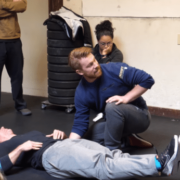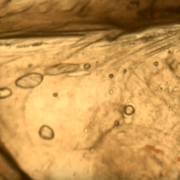Discover importance of diaphragmatic breathing techniques on sports performance and psychology for baseball and softball athletes. Learn how to STOP anxiety, famous athletes who use breathing techniques and the 4-7-8 breathing study.
Breathing Technique For Hitting: Why Hitters Shouldn’t Breath Like “Normal”
Before we get to the breathing technique for hitting a baseball (same for softball), consider breathing is one of the most commonly dysfunctional movement patterns today. In other words, nowadays “normal” breathing IS dysfunctional!

Photo courtesy: MobilityWOD.com YouTube video
Why? Here are a few reasons off the top of my head – you could probably think of others:
- High levels of stress hormone cortisol throughout the day because of constant bombardment of mind numbing hamster-constantly-on-the-wheel technology (phones, video games, etc.),
- Overuse training – doubling training efforts without doubling recovery efforts (dangerously over scheduled youth athletes), and
- Injuries to certain areas of the body, playing a one-sided dominant sport (i.e. baseball and softball), and imbalanced training (without proper flushing of waste by the lymphatic system), can build a shorter breathing pattern, which can cause a constant drip-drip-drip of the fight or flight response throughout the day.
SCIENCE-BASED TRAINING:
Improve your hitting strategy dramatically by applying human movement principles.
Learn not only how and what to train but also the science behind the methods.
One of my hitter’s dad asked me what physical training I recommend outside of a busy baseball and football schedule, and I said either Yoga or Pilates. I HIGHLY disagree with most hitting coaches putting ORGASMIC emphasis on explosive, Olympic, Cross-fit, or whatever else type of performance training out there.
Don’t get me wrong, there’s a time and place for physical training geared for performance, but corrective maintenance training SHOULD precede performance – if we want healthy moving athletes. If you put fresh 80,000 mile tires on a Lamborghini with a misaligned front end, then you’ll be lucky to get half the miles out of the tires! Also, the tires won’t be your only problem.
Let’s connect what an effective breathing technique for hitting a baseball means to hitters…
World renowned strength and conditioning coach Brett Jones says this about “anatomical” versus “biomechanical” breathing in a post titled, “How Your Breathing Relates to Your Movement”:
“Anatomical breathing match refers to the natural matching of the inhalation and exhalation with extension and flexion of the spine/body. Extension facilitates inhalation and flexion facilitates exhalation. As the body gets compressed (flexion) exhalation dissipates the pressure and extension assists in opening the thoracic area to assist in inhalation. In addition, anatomical breathing can be used in stretching where the exhale is used to enhance the relaxation into a stretch.
Whereas, in the biomechanical breathing match we flip those actions. Inhaling to increase the intra-abdominal pressure during flexion and exhaling to improve muscular action and stability during extension. Biomechanical breathing match is key to being able to handle loads through the body during performance. During a dead-lift, kettle-bell swing or a kettle-bell military press the biomechanical breathing match allows us to amp up our strength and stability.”
The video above demonstrates this biomechanical breathing technique for hitting a baseball. I’ve had quite a few of you ask about this, so here you go! The description says the above YouTube video is about…
“Identifying and correcting low back extension loading issues through the correct sequence of breathing. If we can get our athletes to breath better across all movements and under load, performance will improve.”
Dr. Mark Cheng, one of my many favorite strength and conditioning coaches, says:
“When you truly own a movement pattern, strain isn’t part of the picture.”
There are a couple other resources I’d be estupido not to mention that plays right into improving breathing technique for hitting a baseball:
- Popular post I did on the problem of video gaming among youth titled, “Fortnite May Be Dangerous To Hitters Who Crush”,
- Two guided meditation apps for mobile device: Headspace (my personal favorite that I use), and Calm, and
- And lastly, gratitude is the antidote to bad stress, check out the 5-Minute Journal
(I use also).
The above video is only 3-min and 41-secs, so there won’t be any breathing technique for hitting a baseball notes. I’d love to hear your thoughts in the REPLY section below this post…
Move better, perform better. Enjoy!




